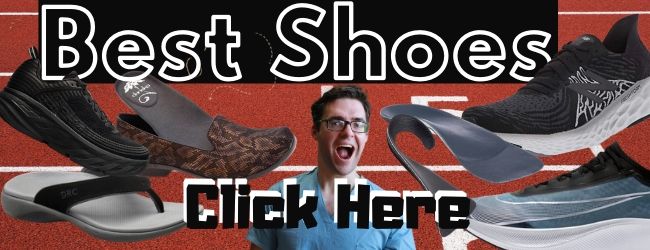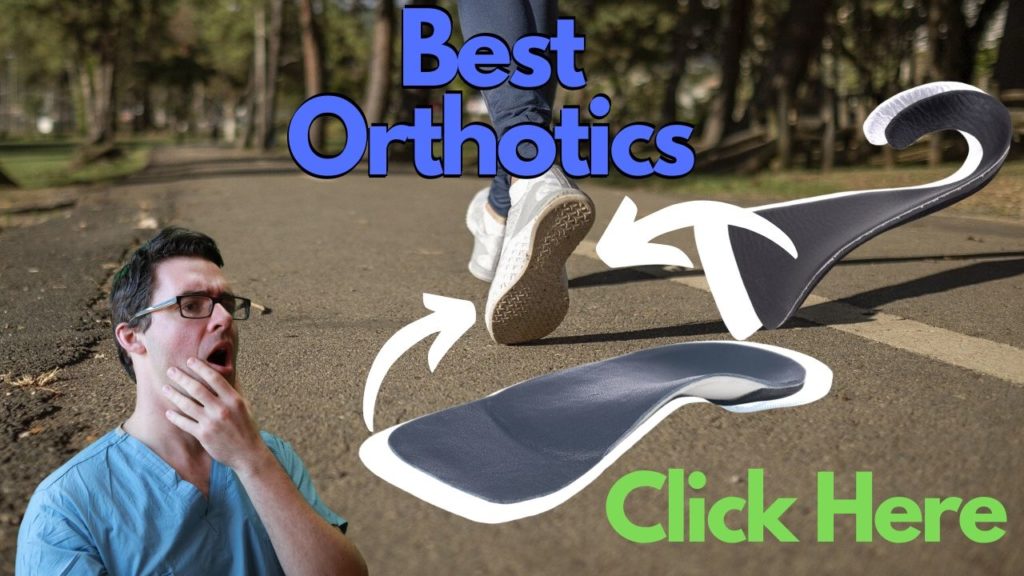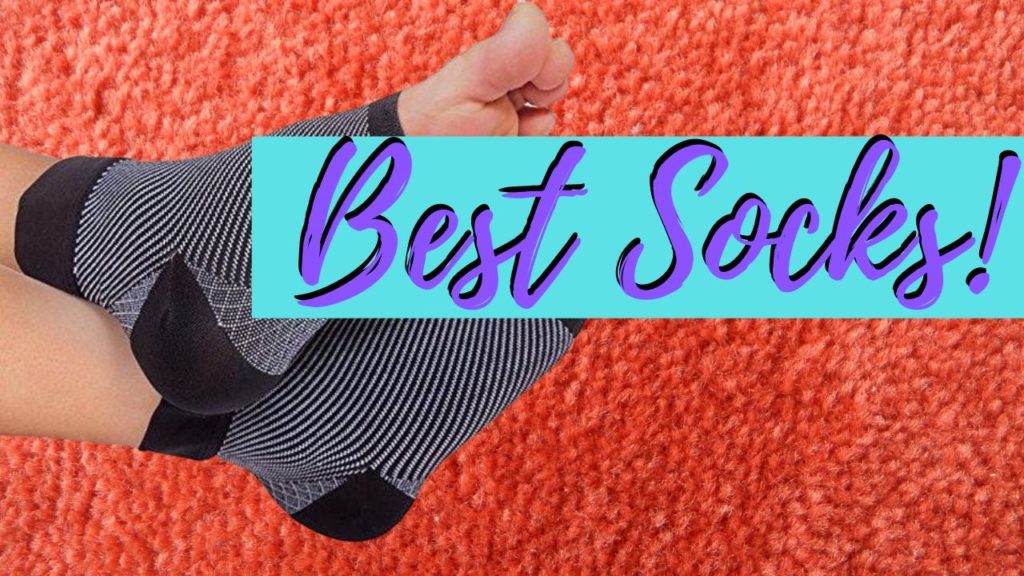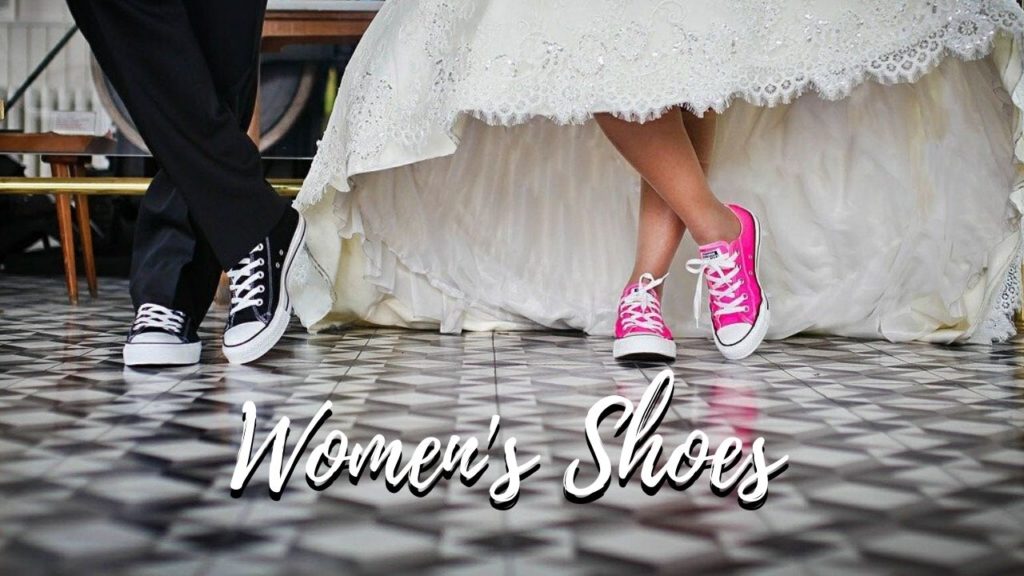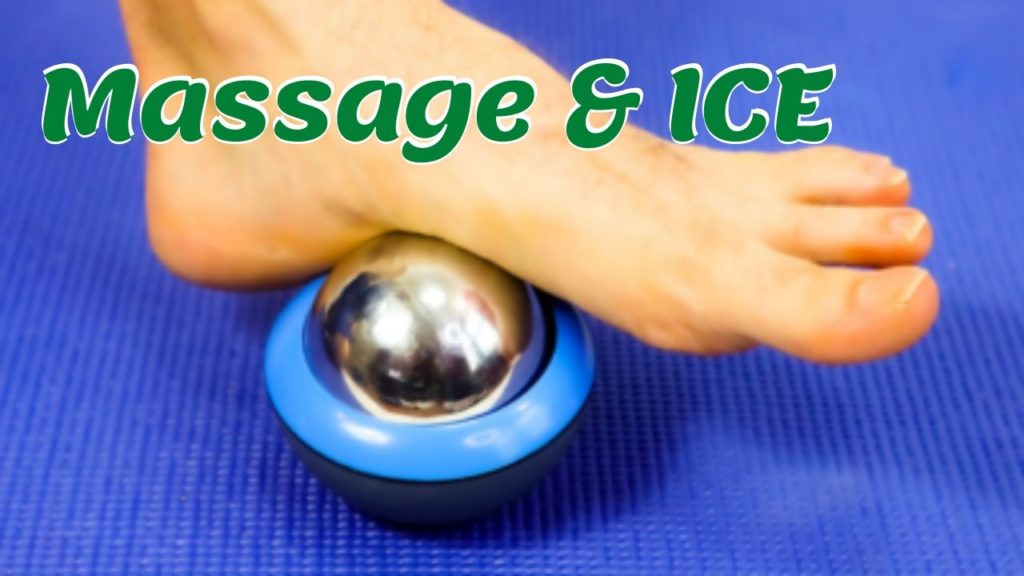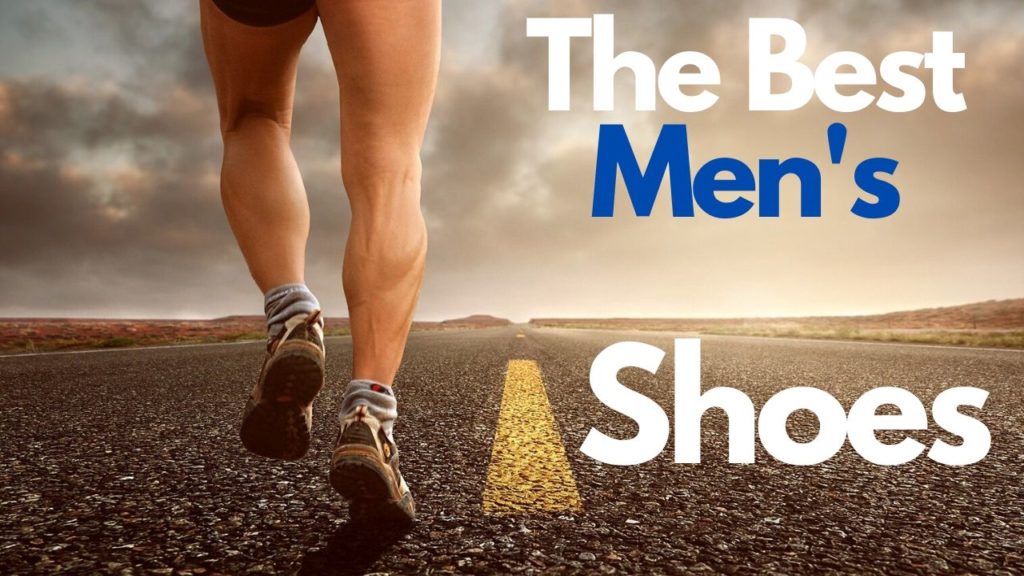Painful Heel Lump or Bump on the Back of the Foot [Best Treatment!]
Painful Heel Lump: Back of the heel pain is usually Achilles tendinitis, a bone spur, or Achilles bursitis. Make 100% sure your Achilles heel pain stops!
Table of Contents
Bump on the back of my foot treatment video:
Painful bump in the back of the foot causes:
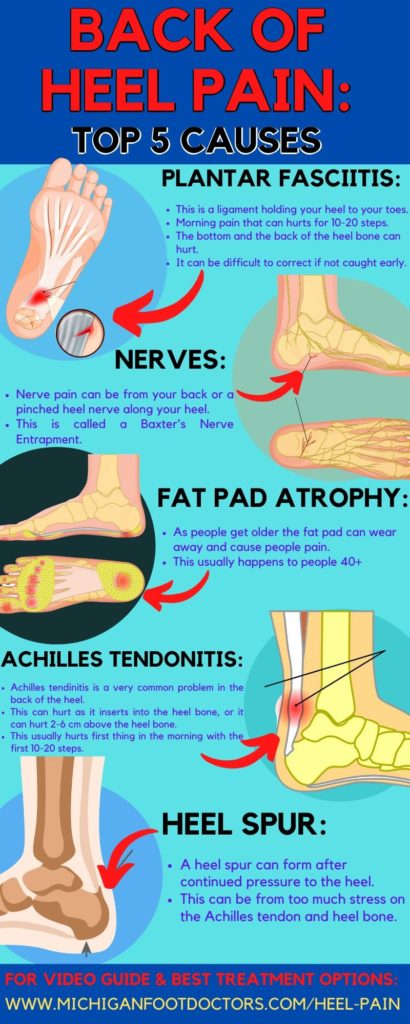
Achilles Tendon & Back of Heel Pain
Back of the Heel Pain Causes:
Back of the heel pain is most commonly caused by the Achilles tendon and back of the calcaneus damage.
The most common causes of back heel pain are:
- Fat pad atrophy can lead to calcaneus bone pain.
- Insertional Achilles tendinitis pain.
- Achilles tendinitis 2-6 cm above the heel bone.
- An Achilles tendon strain or rupture.
- Nerve impingement or entrapment in the heel.
- Achilles tendinosis.
- Back of the heel spur pain.
- Achilles tendon bursitis.
- Plantar fasciitis.
Achilles Tendonitis Symptoms:
- Achilles tendonitis symptoms can be a pain in the morning when you first wake up.
- Pain when trying to bend the foot up as the Achilles tendon inserts into the back of the heel.
- Worsening inflammation and tenderness while standing and walking for long periods of time.
- Improvement when wearing good shoes, good orthotics, and supportive sandals.
Overview of Back of the Heel Pain:
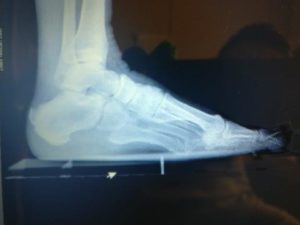
Insertional Achilles tendinitis:
- If you have found your way to this page, this is likely the type of pain you are thinking about.
- A few different names can classify this. Numerous overlapping problems can contribute to insertional Achilles tendinitis.
- These are known as a Haglund’s bump, heel spur bursitis, Achilles fat pad inflammation, insertional Achilles tendon spur, and it does go by many other different names.
- Spurs can also be called an enthesophyte.
- This is most common, but not in the back of the heel.
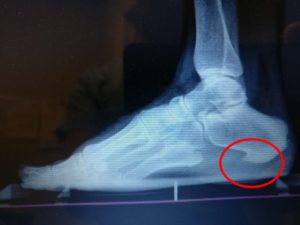
An Achilles tendon-bone spur is at the back of the heel where the Achilles tendon inserts.
This is called plantar fasciitis:
- This involves bone spur formation at the bottom of the heel or the sole of your foot.
- This is very frequently associated with the tightness of your plantar fascia, and this does that heel spur to form.
- But this is on the bottom of your foot. Not where your Achilles tendon inserts.
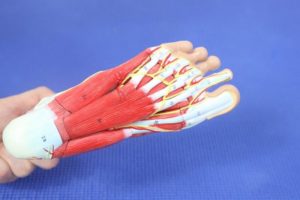
Causes:
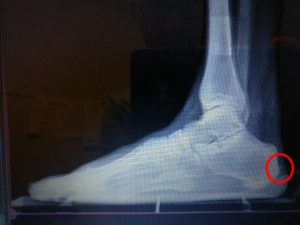
Suppose left unchecked for many years. This can develop into a large painful back of the heel spur.
- The most common causes of a heel lump or bump are the swellings associated with insertional Achilles tendonitis.
- This can then lead to bursitis or a back of the heel spur.
What is Insertional Achilles Tendinitis?
- Insertional Achilles tendinitis inserts into the back of the heel bone.
- This is where the Achilles tendon connects your big thick calf muscle into the back of the heel bone.
- A bone spur can gradually develop around the tendon inserted into the bone.
- This is a chronic development.
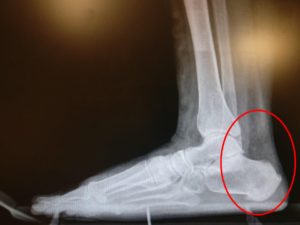
This is a large painful bump and lump at the back of the heel. This is called an insertional Achilles tendon heel spur.
How Does a Heel Spur Form?
- Think about the heel spur and thickening as a gradual ripping out of the bone heel bone.
- Your calcaneus bone is trying to heal, but it almost gets stretched out along with the tendon. As a few years go by, this eventually looks like a spur has formed.
How Long Does A Spur Take To Form?
- This spur formation process usually takes many months or many years to develop.
- When we go to the site surgically, it looks more like hard sand than thick spiky bone.
- So don’t get too scared just yet! It does not always mean that you need some type of surgery.
Does A Spur Mean Permanent Damage?
- Yes, a bone spur is indeed associated with Achilles tendon damage. The bigger the spur usually means more tendon damage and pain.
How Does This Differ From Bursitis:
- The inflamed and damaged insertion of the Achilles tendon can be calcified hard bone.
- But this can also cause the Achilles fat pad to become inflamed. This can also be called back of the heel bursitis.
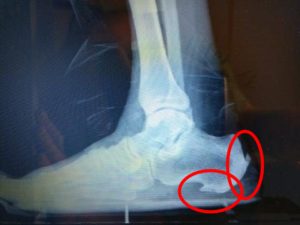
Who is at risk for insertional Achilles tendinitis?
- Insertional Achilles tendinitis is usually associated with tightness through the hamstring muscles in your calf muscle.
- Yes, indeed, the older you get, the stiffer your tendons in your joints generally tend to get.
- People usually in their 40s, 50s, and 60s tend to have more stiffness, especially with a high workload.
- I see this most commonly with people who spend the majority of the day standing.
- Achilles tendinitis usually develops gradually over years or decades and is not linked to a single injury.
- Running and jumping can significantly make the back of your heel pain worse.
- People usually feel it while walking up and down the stairs or standing on hard concrete for a good portion of the day.
- The more activity you do, the more pain and inflammation you will have.
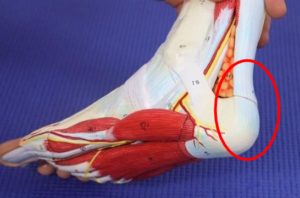
Home Treatment:
Why Achilles Heel Spur Insertion Pain is So Hard to Treat:
Why is the heel spur insertional pain hard to treat?
- Everybody treats this differently and doesn’t really take it all that seriously as a non-surgical treatment method.
- They see a very large thick spur or bone build-up and assume that they must remove it surgically.
- Some people treat this disorder by stretching, some people are treated by ultrasound and massaging, and some people do it by physical therapy techniques alone.
- It is possible to fix it without surgery!
Let The Inflammation Cool Down.
- The bottom line, though, is most people never let inflammation cool down.
- People continued to stay stiff and painful while doing every other possible treatment method.
- They continue going to work every day, and they continue trying to power through it and walk or run.
- No pain, no gain does not work here! Pain just causes it to stick around forever.
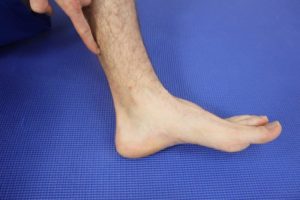
So What Can You Do?
- Find a way to relax the back of your heel, so you’re not walking all day.
Get Off Your Feet!
- This can be tough if you weigh 300 or 400 pounds or stand on concrete for 12 hours a day.
- This is where icing and anti-inflammatory creams can be good.
- I’m not a huge fan of taking pills to solve this problem. It is not a permanent solution.
- Find ways to sit down, find ways to get someone to help you at work.
Alternative Exercises:
- But if you’re a runner or something that can be controlled, take a break from running.
- If you are walking for exercise, switch to weight lifting or something else.
- Switch to biking, swimming, and upper body weight lifting for a few weeks or months.

Find ways to take pressure off of the Achilles Tendon:
- The best way to do this is to find great shoes.
- Great shoes are then best combined with great orthotics.
- Sometimes a lace-up ankle brace may be needed if the first two options don’t work. Usually, with these three things, you can take an amazing amount of pressure off them.
- The key is actually to wear them. Wearing these devices during dinner and walking barefoot for the other 23hrs of the day won’t fix the problem.
- For some people, if the pain is bad, they may need a cast or boot for at least a few weeks.
- See your podiatrist and get an x-ray of your heel if you think something might be broken. Even a pair of your Achilles tendon may need an ultrasound or an MRI.
Best Supportive Shoes:
- The key to preventing your heel pain is to have a good supportive shoe that supports your ankle joint and subtalar joint from everting.
- If you have a good supportive shoe that keeps pressure on your joints so that your ankle, Achilles tendon, and subtalar joint do not have to work as hard.
- This almost seems counter-intuitive, but when people make a switch to really good supportive shoes that fit properly, the ankle and Achilles tendon pain should gradually start to improve.
Stabilize the Heel With Orthotics:
- Whether the tendon is too tight or not is not the problem. It’s how compressed the Achilles tendon gets against the back of the heel.
- You have to find a way to keep the heel bone from tilting up so much and pressing the Achilles tendon against the back of the heel bump.
- When it’s loaded, the calcaneus gets turned up and out.
- This twisting is when the bone rubs against the Achilles tendon the most.
Full-Length Orthotics Stabilize Your Heel the Best:
- These are our favorite full-length orthotics.
- These will support your heel much better than a 3/4″ length orthotic.
- The main downside is the tighter fit, so get your shoe 1/2 a size bigger.
These are the best non-lace shoe orthotics:
- These work best if your shoe is really tight and you still need a good fit!
These are the best dress shoe orthotics:
- These are our recommended orthotics for dress shoes.
Heavy-duty ankle stability braces:
- If your pain is severe, these are our favorite heavy-duty braces to stabilize your ankle and heel.
Compression ankle braces:
- These are best for when your pain has cooled down a little bit.
- These are also great when you are in a tighter shoe that the heavy-duty brace would not fit.
Fix the underlying problems:
These are Too much pressure and too little flexibility.
- If this truly is a life-altering condition that you have a hard time fixing, make some of the tough choices.
- For example, I can guarantee you if you were a computer programmer and weighed 100 pounds, there is almost no chance that you would have Achilles tendinitis.
- But if you weigh 300 pounds and work on a factory floor 16 hours a day, there’s about a 95% chance that you will have knee arthritis, Achilles tendonitis, hip and back pain. One of these is guaranteed.
Why does Achilles tendonitis persist long term?
2 short answers: Too much pressure and too little flexibility.
- I’m not saying you must meet all these tough criteria listed above.
- Even losing 5 to 10 pounds can take a significant amount of pressure off your feet.
- Even stretching 1 minute every morning can make a huge difference!
- Because the important thing is once you heal this problem, you don’t want it ever to come back.
- There is no doubt about it. Achilles tendonitis takes forever to get better, so give it a chance for a few weeks or months to cool down, as in step 1.
- Then correct the reasons that cause that to happen in the first place, and it will stay away forever.
Stretching Does Help (Even if it doesn’t fix it alone):
- Even if it doesn’t fix the problem completely alone, this is a great modality to reduce Achilles tendinitis.
- Once you understand this concept, you will understand why it happens. Think about it as a rope going along the tree and you pulling against that rope.
- We have to find a way to get that bone to stop rubbing against the Achilles tendon. Often, it’s by lifting up the heel bone or getting rid of that top of the bone spur.
- An orthotic and shoe is a good way to do this long-term, not stretching. But this only works if the tendon cools down from swelling first.
Our favorite static stretching devices:
- These devices mean that they do the stretching for you.
- You could wear these while watching TV for 15-30 minutes at a time.
- Studies show you will gain significant ankle flexibility after 1 month of daily wearing.
Other Causes Of A Painful Back Of The Heel Lump:
1) Back Of The Heel Bone Formation:
- A lump or bump at the back of the heel is a Haglund’s bump.
- It can also be called an enthesopathy: this means calcification of the Achilles tendon.
- This is basically excess bone that forms over time due to improper rubbing and biomechanics.
- This is especially likely in females that wear improper shoes like flats or high heels.
- This excess bone formation of bone at the back of the heel can put pressure on the soft tissue.
- This will eventually lead to irritation and inflammation in the area.
2)Back Of The Heel Bursitis:
- There are two gel-like pouches on the inside and on the outside of your Achilles tendon.
- These pouches are known as a bursa.
The normal function of the bursa is to provide a lubricated surface for the Achilles tendon to slide.
- It should allow the tendon to slide between the bone and the skin.
- If one of these gets inflamed or damaged, you can get a condition known as bursitis.
Who Gets A Back Of The Heel Lump Or Bump:
- The most likely demographic to be affected are females aged 20-30 years old. This is when a Haglund’s bump is most noticed.
- Especially those who wear high heel shoes.
- It is more likely in people with a high arched foot.
- Those who frequently have friction against the back of their heel.
- But It can happen to anyone.
Back Of The Heel Lump Or Bump Symptoms:
- It can be fast on setting pain or very gradually on setting pain.
- Pain that hurts before motion and starts to get better as you move around more.
- The back outside of your heel is painful.
- Achilles tendon insertion pain is likely.
- Inflammation and redness are likely in the skin.
Painful Heel Lump X-rays:
- Large bump on the upper outside of your heel (Haglund’s deformity).
- Calcification of the insertion of the Achilles tendon.
- Soft tissue swelling (bursitis).
- Rule out any damage to the Achilles tendon.
- Rule out any heel spur.
Other Back Of The Foot Pain Causes:
- If the pain appears more slowly and you cannot physically feel a bump on the back of your foot.
- Suspect Achilles Tendinitis.
- Suspect this if the bottom of your heel is hurting.
- Suspect this if your arch is also hurting.
- This is the most common cause of heel pain.
- Suspect these if you have numbness, burning, or tingling.
And don’t forget… GREAT Shoes!
Back of the heel pain treatment:
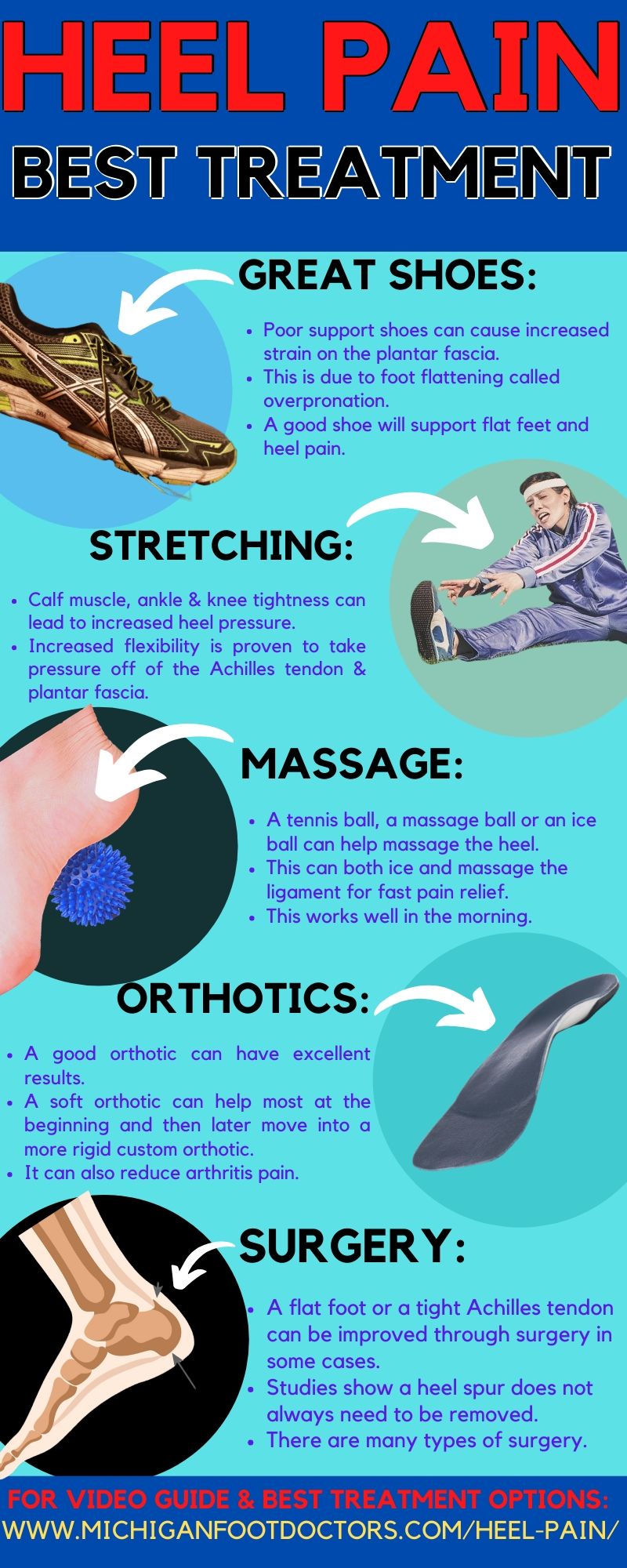
Best Back of Heel Pain Treatment:
- There are usually two phases to treating back of the heel pain.
- The two phases of treatment include controlling the acute inflammation and correcting the biomechanics, which led to the problem in the first place.
- If the tendons and ligaments are inflamed, they are almost frozen in place and cannot function properly.
- Once the inflammation is decreased, we need to correct the biomechanical causes to ensure that the Achilles tendon can never become overworked and inflamed again!
- This doesn’t matter whether it’s The back of the heel spur, fat pad atrophy, insertional Achilles tendinitis, Achilles tendinitis, or even Achilles tendinosis.
- If you do have an Achilles tendon rupture or tear, seeing podiatrist care immediately.
Achilles Tendon Natural Treatment:
Massage & Ice Products:
- Ice is an excellent option that can be safe for almost everyone.
- There is some debate about whether icing is worth doing, but this can help limit the need for medications and keep your options open for chronic pain.
- This works great for your arch, less for the ball of the foot.
- Manual massage on the Achilles tendon & calf muscle is a natural treatment that can also be considered physical therapy for your back of the heel pain.
- This works well for calf muscle pain and Achilles tendon pain.
- The more muscle and ligament tissue there is, the better ice will work there.






Menthol Based Gels:
- Biofreeze is one of our favorites.
- These gels have been studied to work 2x as long as ice.
- This works great for the ball of the foot.
- This can be very effective for pain relief, but this can decrease inflammation in the calf muscle and Achilles tendon.








Massage Sticks:
- These can work great for loosening your muscles.
- This allows less tightness and pressure onto the plantar fascia and heel.
- This is very effective for the arch, the gastrocnemius, calf muscle, and the hamstring and thigh muscles.
- This also works very well for the gluteus muscles if you are having butt cheek or hip pain.
- The massage stick can break up lumps in your Achilles tendon and heel pain.






Remove the Achilles tendon tightness.
- The key is to prevent future pain stress and trauma to the Achilles tendon muscle.
- This means keeping you active while keeping stress off of your Achilles tendon. This will prevent future re-injury and the development of plantar fasciitis.
- If you can get rid of the pain and swelling, this will let you start walking normally.
- If you can walk normally, the vast majority of your pain should gradually start to go away.
- The best way to ensure that your plantar fascia, foot, and ankle ligaments are not overworked is to support them.
- The best way to support them is to use great orthotics and great shoes.
- Some people may also need to rely on supportive ankle braces and other supportive modalities.
Best Shoes for Back of Heel Pain:
- Getting a great supportive pair of Achilles tendonitis shoes will ensure that there is pressure removed from the heel and plantar fascia region.
- This is especially important if you have plantar fasciitis, heel spur pain, or Achilles tendonitis as well.
- Consider Achilles tendonitis shoes combined with a good supportive orthotic for best pain relief!
- The following link will show you what our favorites are.
Best Achilles Tendonitis Insoles:
- These are our recommended orthotics for Achilles tendonitis.
- Custom orthotics can work very well, but they should not be the first line of treatment due to the cost.
- There are different types of different shoes.
- Women’s shoes usually need a less bulky orthotic but allow for less correction.
- A full-length orthotic requires a running shoe, boot, or comfortable walking/dress shoe.
- We recommend doing everything you can to get a good supportive shoe that can fit a full-length orthotic.
- A further home remedy tip for Achilles tendonitis pain is cutting out a hole where the nodule uses scissors or a knife. Be careful and start with a very low-cost orthotic.
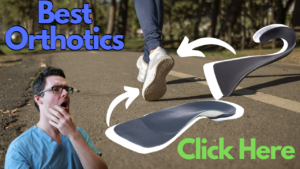
Best Full Length Achilles tendonitis Orthotics:
- These will only work in wider shoes or a good supportive running shoe.
- This will not work in sandals, flats, or most women’s dress shoes.








Best Dress Shoe Achilles tendonitisOrthotics:
- These are a great choice for dress orthotics.






Best 3/4 Length Achilles tendonitis Orthotics:
- These are great options for women’s dress shoes and thinner shoes.
- These are not the most supportive pair of orthotics.


Get A Great Dynamic Stretch:
- It is possible to stretch on your own, but these products can also really help!
- This will take pressure off of the ball of your foot.
- This form of the back of the heel pain physical therapy breaks up the scar tissue.
- We personally prefer this method of stretching.








Get A Great Static Stretch:
- These devices are great for stretching while you are resting.
- This is an excellent Achilles tendonitis physical therapy that you can do at home.
- This will also help take pressure off of the ball of your foot.
- This works great for plantar fasciitis.
- The static night splint can use it while watching TV or at night time.






Best Heel Compression Brace:
- A good compression brace can stabilize your foot from turning outward.
- This prevents your foot from pronation.
- The pronated foot will turn your foot outward, in your foot will rub on the outside of the shoe.
- This has solved their pain for many of her patients and is very comfortable to wear inside your shoe.
- This solves both pain and outward pronation for a relatively low cost.




Best Heel Stability Brace:
- The stability brace goes a little bit further than the compression brace to stop your foot from turning out.
- This takes the pressure off of your heel and plantar fascia.
- At the same time, this is a little bit bulkier and does not affect every shoe.
- We find people are a little bit happier trying the compression brace before the stability brace.






Severe Achilles tendonitis Pain:
- If you think you might have a broken heel, a calcaneal stress fracture, or something of similar severity, these products might help!
- Always remember to see a foot and ankle specialist like a podiatrist if you have plantar fasciitis or more severe pain!
Plantar Fascia Tear, Broken Heel Bone, Achilles Tendon Tear:
- If you have a traumatic injury such as a torn plantar fascia ligament, calcaneus stress fracture, heel fracture, or insertional Achilles tendon injury: consider protecting your foot!
- The best way to do this is, of course, to see your podiatrist and get evaluated with an x-ray, ultrasound, and potentially even an MRI or CT scan.
- If you cannot do so, it may benefit you to be in a cast, fractured boot, or even keep the weight off of it with a rolling knee scooter or other protective devices.
- We as podiatrists frequently take patients off work for very long periods of time when they suffer a traumatic injury. Unfortunately, there is no other way around us in labor jobs.
- If you have a sit-down job, there are ways to get people back to work quicker, but this can be not easy otherwise.
Heel Injury Boot Treatment:
- There are pros and cons to using a boot to treat your heel injury. The Pros are that your injured heel will hopefully have a chance to heal gradually! If you are immobilized too long, the cons are that you will gradually become stiff and overworked to your other leg.
- Our favorite fracture boots and their supplies:








Offloading and Scooter treatment:
- These are favorite knee scooters and walking devices.
- If your Achilles tendonitis pain is severe, offloading can be very effective until the pain calms down.









